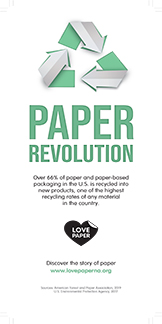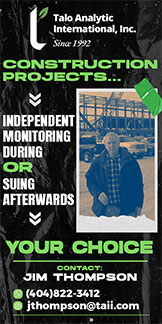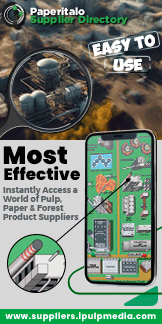Why is a new car pulling out of a dealership all of a sudden worth less than you purchased it 30 minutes ago? It's because the car now resides in the secondary market of vehicles and the history of the car is now in question by prospective buyers. It is no longer a never-before-driven vehicle whose chain of custody is known. If you immediately go to sell it, potential buyers are now suspect as to why you are selling it. Perhaps it is as simple as coming to the realization you are over-committed on the payment plan. Or maybe you didn't get the proper authorization from other board members in your household. Doesn't matter - you are under water. The next buyer does not know how it was driven, stored, maintained, or if there are underlying problems that the original buyer only realized after getting it out on the road. This loss in value is a transaction cost derived from asymmetric information. Someone involved in the transaction knows more than the other side. I have heard it stated as "better the devil you know than the devil you don't." Apply dollars to that statement, and voilà - you have defined a transaction cost.
There are many other examples of transaction costs I could get into (e.g. brand promises, goodwill on balance sheets), but let's just focus the meat of the column on how this may apply to commercial relationships between buyers and sellers. The best place to start would be the simplest asymmetric information: one side knows the max of how much they are willing to spend on something (budget) and the other side knows the minimum of how much they are willing to sell their products and services (capacity to serve a market.) So the dance begins of finding a deal. However, it goes much deeper than that.
Something I have noticed happening over the last decade or so is the requirement for an NDA (non-disclosure agreement) before a buyer will even let a seller look at or compete in an RFP. This makes sense to me since details of an RFP can expose a lot of information about strategy, expansion plans, productivity data, process features that are not under patent (i.e. trade secrets) that the buyer's competitors could capitalize on. Putting an NDA in place puts legal restraints on divulging information anywhere else than the intended audience. By legal restraints, I mean costly lawsuits with substantial damages associated with it. However, the first attempt at an NDA is generally one-way. The seller's responses on solutions, product specs, pricing, alternatives to consider, etc. are not protected. It's always good to put a mutual NDA in place so everyone can be forthright in solving the problems or meeting the needs without a punitive cost, opportunity or otherwise.
Another elephant in the room, best described by asymmetric information, is what a buyer knows versus what a seller knows. Buyers know what the competitive field is offering and at what cost. They know which suppliers can meet some or all of the decision criteria and which ones are willing to accept some or all of the desired commercial terms. Sometimes buyers already know who the internal influencers and decision makers want to "win" a piece of business and steer the whole process in that direction (e.g. vague RFPs, short response timeframes, requirements only offered by one supplier, etc.) Most importantly, they know what the real challenges and problem statements are they are looking to solve within a buying event. That is not always conveyed in an RFP, just the prescription for what they want in a rigid response format so they can compare "apples to apples."
The sellers, being suppliers to a wide variety of the buyer's competition, know optimal solutions they have delivered elsewhere, what others are willing to pay, trade offs, and performance benchmarks in the industry. They know how much capacity they have to serve the buyers (how much they are willing to allocate to a specific customer at what price) and their true cost of goods sold (COGS.) Most importantly, they know their product development pipeline on the next best thing to eventually hit the broader market (what is in alpha or beta testing.) That alone, if a period of exclusivity is negotiated, could give the buying party a competitive advantage for years in their market segment.
The goal of any transaction is to reach a mutually amicable outcome. As I stated earlier, sometimes I see sourcing events from buyers that already know what path they are going to take. Why go through all that time and effort to launch a broader buying event? The big companies generally have policies in place to solicit at least a competitive bid to check pricing of their desired path. Other times they pull in more suppliers to bid to look for other ideas on solving the problem, e.g. solutions derived from different perspectives. Many times in my thirty years of commercial sales my employers and I have offered novel concepts or solutions that the buyers can freely adopt without awarding business to me or whomever I represent. This is not amicable. I have a long list of dirtbag companies and people who have stolen intellectual property, but we freely offered it, without NDAs, in order to win a piece of business. I hate to write about things like this in an open forum, but it happens, we all know it does.
An additional goal should be to advance the technology, innovation, cost structure, and wastefulness - in all its forms - for business, or society in general, to prosper. Yes, that seems like a grandiose vision for buying a crane system, motor control center, defoamer, or process historian, but all these transactions in aggregate lead to a better world. Yet, we can also see cases where one side wants a win-lose scenario to unfold which leads to bad places like bankruptcy, litigation, and uncompetitiveness. Asymmetric information is standing in the way of great win-win deals happening, so let us get all the cards on the table and forge a path forward both sides can live with, or better yet, prosper. Honesty is the best policy...within the constraints of professional ethics and NDAs.
Steve Sena (stevesena@me.com) is a Cincinnati native. He obtained degrees in Paper Science & Engineering from Miami University in Oxford, OH and an MBA concentrating in Economics from Xavier University. He's worked for a broad array of leading producers, suppliers, and converters of pulp and paper grades.






















